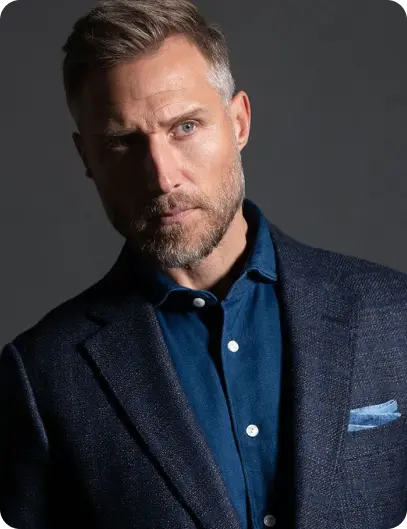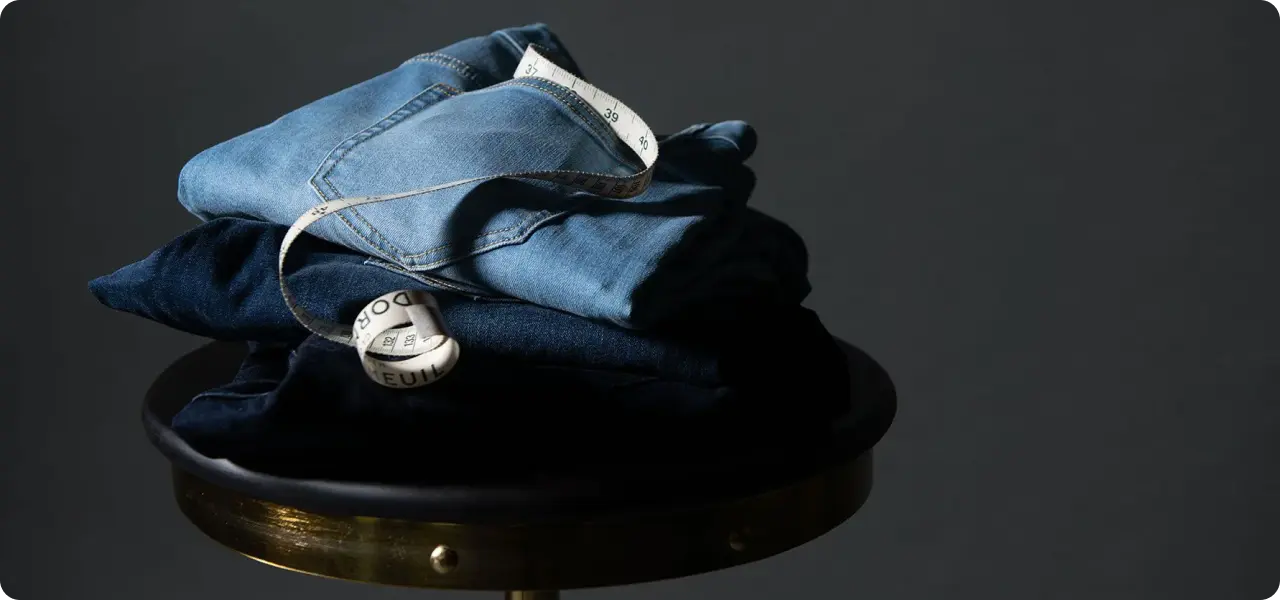Garment Manufacturing
The production of bespoke clothing, whether it be a t-shirt or a fully tailored suit, involves a few critical phases:
Production Phases:
- Fabric selection, delineation of patterns, execution of cuts, seam construction, quality verification, enhancements, and the smoothing of the final garment are critical phases in bespoke clothing production.
- Attention to detail and synchronized efforts are crucial throughout these manufacturing stages to ensure the resultant piece adheres to the company's stipulated requirements and maintains a high standard of quality.
- The selection of fabric also plays a pivotal role, with the decision to use either woven or knitted materials greatly influencing the garment's aesthetic appeal, tactile experience, and practical attributes.
Role of Pattern Makers:
- Pattern makers translate designs into templates that can be replicated across different sizes while maintaining the integrity of the design details.
- Their expertise ensures that each piece not only fits the model for which it was designed but also adheres to the high-quality standards set by the fashion industry.
- Precision in pattern making is particularly important in custom clothing, where the goal is to produce garments that perfectly match the customer's measurements and style preferences.
Bespoke and Custom Tailoring:
- Bespoke and custom tailoring introduce an additional layer of complexity and craftsmanship to modern garment manufacturing.
- These practices emphasize individualized fitting and personalized design, requiring a higher degree of skill and attention from pattern makers and tailors.
- Quality control is paramount in bespoke tailoring, with each piece being scrutinized to ensure it meets the client's expectations and the company or factory's standards. This approach celebrates the artistry of clothing creation, offering consumers garments that are expressions of their unique style and preferences.
Garment Production
Garment production for custom garments involves a meticulous and detailed process that transforms initial fashion concepts into wearable art.
Design Phase
Garment production begins with the design phase, where creative visions for existing garments are sketched out and refined. Pattern makers play a crucial role in translating designs into practical blueprints for production, ensuring each garment meets specifications and fits perfectly.
Pattern Making
The next critical step involves pattern makers, who are essential in turning these designs into practical blueprints for production. These skilled professionals craft patterns that will dictate how the fabric is cut and sewn together, ensuring each garment meets the designer's specifications and fits the wearer perfectly.
The process of turning a design concept into a physical item significantly hinges on material selection. The choice of fabric is crucial because it determines not only the visual and tactile qualities of the garment but also its practicality and resilience.
Fabrics with a woven structure are commonly preferred due to their flexibility and durability, making them compatible with a variety of designs.

Prototyping
Following the selection of suitable textiles, the next step is prototyping. At this juncture, manufacturers craft a prototype garment, which undergoes evaluation and refinement until it fulfills all of the company's specific requirements. This cyclical process ensures that the final product adheres to the highest standards of quality and is ready to be produced.
Custom vs. Mass Production
In comparing mass-produced fashion to custom-made garment production, several key differences emerge. Mass production leverages economies of scale, utilizing standardized patterns and automated processes to produce large quantities of clothing quickly and cost-effectively. This approach often limits the variety of designs and customization options available.
In contrast, custom-made garment production prioritizes individuality and precision. Manufacturers invest significant time and resources into creating unique pieces tailored to specific customer preferences. This bespoke approach involves more manual labor, from intricate sewing techniques to detailed quality control, reflecting a commitment to craftsmanship and quality over quantity.
Custom garment fabric production requires a comprehensive understanding of garment manufacturing processes, from the initial design phase to the final touches. Companies specializing in this field must possess not only the technical skills necessary for high-quality sewing and material handling but also a deep reservoir of resources, including access to premium materials and skilled pattern makers. These manufacturers distinguish themselves by their ability to adapt to trends and innovate, ensuring each piece of fabric they produce stands out for its craftsmanship and design.
Production Planning
Production planning is essential in custom garment creation, serving as the backbone of the entire manufacturing process. It ensures precision and efficiency from initial design to final product, influencing the quality of finished garments and customer satisfaction. By meticulously organizing each step-by-step guide and phase of production, companies can anticipate potential challenges and devise solutions in advance, leading to smoother operations and higher-quality outcomes.
1. Scheduling
Production starts with the detailed arrangement of tasks from pattern-making to the final sewing stages. Allocation of specific time frames for each process ensures that resources are properly utilized and deadlines are met.
2. Resource Allocation
Next, it’s vital to properly distribute materials, labor, and equipment throughout the manufacturing process. Proper resource allocation allows for effective management and utilization of resources.
3. Timeline Management
Along with the other two steps, constant adjustments are an essential component to keeping production on track. Anticipation of potential challenges and solutions ensure smooth operations.
In the realm of custom garment manufacturing, production planning is especially crucial for ensuring quality and efficiency. Apparel manufacturers create and maintain quality through the meticulous oversight of each production stage, from selecting the finest woven materials to the precise execution of pattern making and sewing by skilled pattern makers and seamstresses.
Efficiency is achieved by optimizing the use of resources, reducing waste, and minimizing downtime in the factory. Manufacturers and suppliers that excel in production planning can significantly enhance their operational performance, leading to faster turnaround times, reduced costs, and superior garments that meet or exceed customer expectations.

Manufacturing Process
The manufacturing process for custom garments begins with the initial design phase, where creative visions are mapped out, created, and refined. Pattern makers play a crucial role in this phase, utilizing both traditional methods and advanced technology to create precise patterns that dictate how the fabric will be cut, shaped, and assembled. Pattern-making ensures that fabric cutting aligns with the designer's vision and fits as intended.
Cutting, Sewing, and Finishing
Cutting, sewing, and finishing are the core stages of custom garment manufacturing.
- Cutting Fabric: From silks to knitted fabrics, this process involves slicing woven materials according to stitch patterns created earlier and requires precision to ensure proper alignment during assembly.
- Sewing Stage: Seamstresses join individual fabric pieces, navigating the complexities of different fabrics and designs.
- Finishing: Various processes like hemming, adding buttons or zippers, and pressing the garment ensure a polished look and functionality.
Each stage demands a high level of skill and attention to detail to produce garments that are aesthetically pleasing, functional, and durable.
Quality Control
Quality control is integral to the custom garment manufacturing process, involving rigorous inspection at various production stages.
- Inspections ensure every aspect of the garment meets standards and client expectations.
- Checks identify defects or discrepancies in sizing, stitching, seams, or fabric quality.
- Garments passing inspections proceed to final touches, including additional detailing, packaging, and preparation for delivery.
Ensuring the bespoke garment meets the client's expectations is the ultimate goal of the manufacturing process. This requires not just technical proficiency in cutting, sewing, and finishing, but also a deep understanding of the client's vision and needs. Manufacturers leverage their resources, technology, and expertise to create garments that embody the desired style, fit, aesthetic appeal, and functionality. Through a combination of skilled pattern making, careful material selection, and stringent quality control measures, companies strive to deliver custom apparel that exceeds client expectations, reinforcing the artistry and precision that define the custom garment manufacturing industry.
Go Behind The Seams At Q Clothier
If you’re ready to experience the perfect fit without sacrificing your personal style, it’s never too soon to start designing your own custom clothing. At Q Clothier, our custom tailors know exactly how to provide you with the perfect fit, and a great long-term investment.
From individual pieces to fully customized suits, we’ll work with you every step of the way to meet all of your needs and provide proper care instructions. Plus, you’ll be able to sit back and relax knowing you’re going to get the best quality. Not only are our tailors highly experienced, but we only partner with the world's finest mills (e.g. Ermenegildo Zegna, Loro Piana, Scabal, and more).
So, if you’re interested in starting your custom clothing experience, you can get started on our website, or contact us at one of our many locations around the US.

